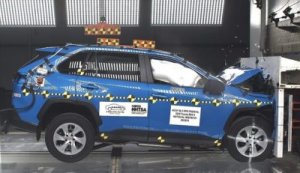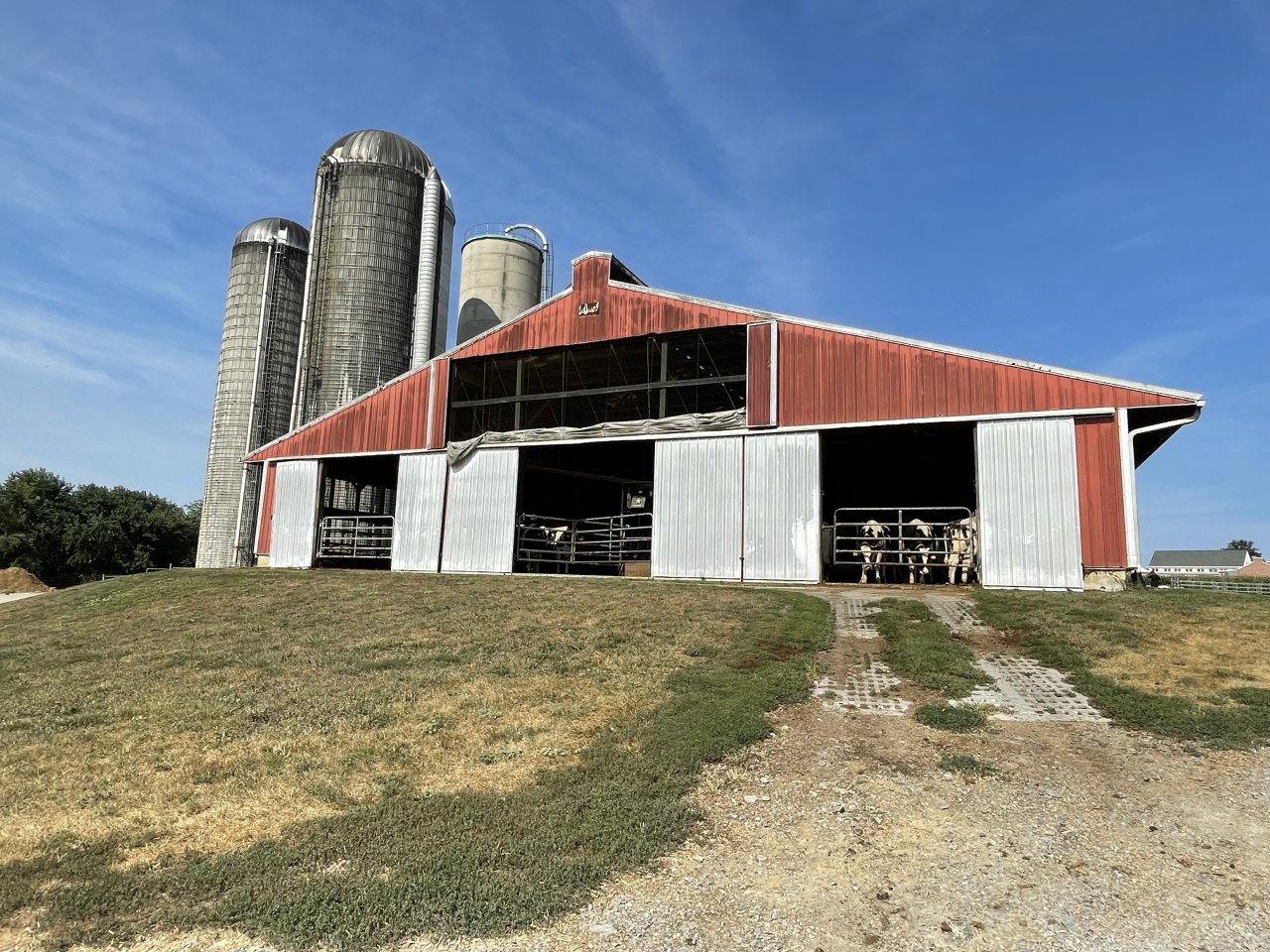In Battle Against ‘the Highway Disease,’ NHTSA Attacked as Being Asleep at the Wheel

By Myron Levin and Eli Wolfe
Former President Lyndon Johnson was probably not the first, nor certainly the last, to note that more Americans have died on the nation’s roads than in all of its wars combined. He called it “the highway disease” in a speech in 1966, when he signed legislation that aimed to curb the slaughter.
At the time, more than 50,000 Americans were dying annually in traffic crashes. A new highway safety bureau, later named the National Highway Traffic Safety Administration, or NHTSA, was created to set vehicle safety standards, oversee recalls of defective cars and trucks, conduct safety research and consumer education, and distribute traffic safety grants to states — all helping to reduce the body count.
But lately NHTSA, which turns 50 this month, has been asleep at the wheel, safety advocates say, playing its part in the Trump administration campaign to cut business regulations. The agency, part of the Department of Transportation, has scaled back key activities even as progress against “the highway disease” appears to have stalled. After traffic deaths hit an all-time low of 32,479 in 2011, they began climbing and in recent years have ranged between 36,000 and 38,000.
“It’s a total do-nothing agency now,” complained Joan Claybrook, who headed NHTSA from 1977 to 1981. NHTSA “continues to take a back seat to whatever the industry wants,” said Jason Levine, executive director of the Center for Auto Safety, a nonprofit advocacy group.
NHTSA officials declined to be interviewed for this story, but said in an email that a key safety metric, the fatality rate — measured by traffic deaths per total miles driven — “has improved steadily’’ since 1970. “We will continue to work to fulfill the agency’s mission of saving lives on our roads and highways,” the email said.
Automakers, including Ford, General Motors, Fiat Chrysler, Toyota, Honda and Hyundai, did not respond to requests for comment.
Records and interviews show that NHTSA has failed over the past four years to complete safety standards that could increase the chance of people surviving, or avoiding, a crash. President Donald Trump set the tone within days of taking office with an executive order directing federal agencies to rescind two rules for each new one they issue.

Jason Levine, executive director of the Center for Auto Safety. Photo courtesy of the Center for Auto Safety.
One consequence is that NHTSA is years late in meeting congressional deadlines to finalize a host of safety measures. In place of enforcable rules, the agency has favored guidelines and voluntary agreements with automakers on implementing new safety technologies and developing self-driving cars.
NHTSA did push hard on one rule — to weaken mileage standards for cars and trucks in the fuel economy program it jointly manages with the Environmental Protection Agency.
In April, the agencies issued a final rule to relax the targets set by the Obama administration for 2021 to 2026 models, which even some automakers opposed. At the same time, the rule stripped California and other states of the power to set their own tougher standards, a move the states are challenging in court. NHTSA defended the action as a major safety advance, saying it will hold down vehicle prices and encourage motorists to replace older models with newer, safer ones.
NHTSA also has resisted for more than three years an order to raise penalties on automakers for violations of mileage standards. A 2015 law requires inflation adjustments so the impact of penalties doesn’t weaken over time. NHTSA’s claim that the law doesn’t apply to the fuel economy program triggered lawsuits by 13 states and environmental groups. The agency lost the latest round in August when a federal appeals court rejected its position.
Civil settlements with automakers, dealers and component manufacturers for such offenses as hiding safety defects and delaying recalls also have declined sharply under Trump, a FairWarning review of NHTSA records shows.
NHTSA imposed 49 civil penalties totaling $685,079,550 during the eight years of the Obama administration, including 17 multimillion dollar fines against Toyota, Honda, BMW, General Motors, Ford, Fiat Chrysler, Hyundai and others, FairWarning found.
The agency has levied a total of seven penalties for $231,270,000 during Trump’s four-year term. Nearly the whole amount was what NHTSA described as a record-breaking penalty of $210 million against Hyundai and Kia over their handling of recalls sparked by engine fires — though $81 million was the actual fine, with the rest to be deferred or invested in safety improvements. [For a breakdown of penalty settlements by year, click here.]
NHTSA has also reached a dubious milestone, going an entire presidential term without a permanent head. Heidi King was nominated as NHTSA administrator and served on an acting basis for more than a year, but resigned in 2019 after the Senate failed to confirm her.
Yet critics acknowledge that the agency, and its safety mission, have long suffered from neglect no matter who is in office.

David Friedman, former deputy administrator of NHTSA, is vice president for advocacy at Consumer Reports. Photo courtesy of Consumer Reports.
“NHTSA is a chronically underfunded and over-politicized agency, and those two combined can make it very hard for it to do its work,” said David Friedman, NHTSA’s deputy administrator from 2013 to 2015 and now vice president for advocacy at Consumer Reports.
Road crashes are the leading cause of death for Americans ages 1 through 19. About 100 people perish daily, the equivalent of a fully-loaded Boeing 747 crashing every three or four days. Fatalities aren’t the whole story. Well more than 2 million people a year are injured in the U.S., according to NHTSA estimates, and health care and other financial costs annually run into the tens of billions of dollars.
Yet while Americans are sensitive to many lesser risks, the cruel arithmetic doesn’t appear to fully register with politicians or the general public. That may be why, despite road crashes causing 95% of U.S. transportation deaths, NHTSA’s budget is about one-sixteenth that of the Federal Aviation Administration.
NHTSA currently has 620 full-time staff and a 2020 budget of $989.3 million, about two-thirds of it passed along to state and local governments as traffic safety grants. The agency counted a staff of about 900 before the Reagan administration imposed drastic budget cuts in 1981. Its staff has mostly ranged from 600 to 650 ever since, as Republican and Democratic administrations have been consistent about one thing: never giving NHTSA that much to work with.
“It’s not hard to see that doubling, tripling, quadrupling the workforce would allow NHTSA to save more lives — a lot more lives,” Friedman said. “It would allow the agency to put more standards on the books, update consumer information in ways that get more innovative safety technology into the hands of consumers, and increase enforcement around defects.”
Larry Hershman was at NHTSA from 1999 until 2017, most of the time in the agency’s Office of Defects Investigation, which reviews safety complaints and oversees recalls of defective vehicles.
“We were always understaffed,” Hershman told FairWarning. “You’re going up against a company like General Motors or Toyota or Ford, and they have a product liability or safety group with dozens or hundreds of engineers and tons of lawyers. And generally, we would have maybe a couple of investigators working on a particular product area or manufacturer.”
“Certainly, the staffing levels could have been much better to level the playing field,” Hershman said. “I think we did a pretty good job considering the limitations.”

Larry Hershman, a former safety defect investigator at NHTSA. Photo courtesy of Hershman.
Hershman recalled his irritation when lawmakers bashed NHTSA for lapses and delays.
“They really rip into the agency for not doing this or that. But where’s the money?” he said. “Come on, you can’t have it both ways.”
Perhaps feeling picked on by lawmakers, safety advocates and the auto industry, NHTSA is something of a fortress agency. Interview requests are rarely granted, and in dealing with journalists NHTSA can be gun-shy and stingy with information.
It has repeatedly run afoul of the federal Freedom of Information Act, which requires agencies to disclose public records. Since 2007, NHTSA has been the target of at least nine successful FOIA lawsuits. (Full disclosure: FairWarning has a pending FOIA suit against NHTSA involving records requested a year ago.)
Among NHTSA’s courtroom opponents has been Randy Whitfield, a statistician with Quality Control Systems Corp., a consulting firm. Whitfield told FairWarning that NHTSA currently is sitting on two FOIA requests for data from the Fatality Analysis Reporting System, a database on crash deaths used by researchers. According to Whitfield, the agency used to routinely release this sort of information, but now withholds it.
“Am I going to have to go to court to get the FARS data, for God’s sake?” Whitfield said.
NHTSA over the years has issued dozens of safety standards, from seat belt, airbag and child seat requirements that have saved tens of thousands of lives, to less-familiar rules on the performance of everything from tires, headlights, brakes, door latches and roofs. But its rulemaking efforts were strongest in earlier years. More recently, the agency has focused more energy on campaigns to encourage safe driving and supervising recalls.
Adopting safety standards is, by design, a drawn-out process that has become more laborious over time. It requires years of procedural steps, including an exhaustive analysis of the proposed rule’s monetary costs and benefits — always with the knowledge that the industry can go to court to tie up regulations it doesn’t like.
David Strickland, NHTSA’s administrator from 2010 to 2014, said that completing a rulemaking in four years “is crazy fast.” And once a standard is issued, manufacturers typically have several more years to implement the change in all new models — creating an opportunity to market the safety feature as a pricey add-on before it becomes standard. In the long period of gestation, people are injured and killed who would have been spared had things moved more quickly.
Consider the long struggle over backup cameras to cut the toll of backover accidents, which were causing thousands of injuries and over 200 deaths annually — mostly of small children or elderly people. The horror of parents killing their own children led Congress to pass the Cameron Gulbransen Kids Transportation Act of 2007, named for a 2-year old whose father, a pediatrician, backed over the toddler in their driveway on Long Island in New York.
The original timeline called for a final rule by 2011, with cameras in all new vehicles by 2015. But NHTSA kept pushing back the deadline, reflecting criticism from the White House Office of Management and Budget of a lopsided comparison of costs to install cameras against the far lower dollar values assigned for lives saved.
Fed up with the delays, consumer groups and parent-activists eventually sued to force adoption of the standard. In March 2014, a day before a federal appeals court hearing, NHTSA caved and issued the standard. By then, most new vehicles already had cameras, though manufacturers still had until 2018 to install them in all models.
Other safety rules ordered by Congress, but years behind schedule, have triggered an investigation by the Government Accountability Office.
The overdue rules were ordered in transportation bills passed in 2012 and 2015. One standard sought by Congress aimed to improve the structural integrity of long-distance buses after a series of deadly wrecks. Others involved child seat protections in side-impact crashes; a mandate that recall notices be sent to vehicle owners by text or email; and a requirement for seat belt reminders in back seats, where many passengers fail to buckle up. That would be “an easy, simple, low-hanging fruit change” that could save lives, remarked Janette Fennell, founder of the advocacy group KidsAndCars.
None of these rules has been completed.

Cathy Chase, president of Advocates for Highway & Auto Safety. Photo courtesy of Advocates.
The delays led Sen. Edward Markey (D-Mass.) to rebuke Heidi King, then NHTSA’s acting administrator, at a 2018 hearing.
“It’s on our regulatory agenda as ‘in progress’,” King responded at one point.
“I appreciate your support for all the public safety regulations that we’re working on,” she said another time.
The list of blown deadlines “goes on and on,” Markey complained. “The agency has to do its work, finish these rulemakings,” he told King. “The longer this goes …, the more endangered the public is.”
Asked about the delays, NHTSA told FairWarning in its written response that safety rules can’t be issued without first being adequately researched. “Regardless of statutory deadlines, if the underlying research does not exist, it needs to be developed and performed.”
In October, the GAO agreed to investigate the delays at the request of members of the House Energy and Commerce Committee. They asked the GAO to determine if funding constraints or unfilled positions were keeping NHTSA from doing its job.
“These safety mandates cannot save lives if they are not carried out,” said the letter to the GAO from Energy and Commerce chairman Frank Pallone (D-N.J.), consumer protection subcommittee chair Jan Schakowsky (D-Il.) and member Lisa Blunt Rochester (D-Del.).
“This blatant disregard for Congressional directives not only endangers the lives of all who travel on our roads,” the letter continued, “but also suggests that NHTSA may face institutional challenges that hinder its ability to fulfill its safety-critical mission.”
NHTSA has also come under attack for failing to set rules for autonomous features that advocates say could save thousands of lives, but currently are not required in vehicles nor covered by minimum performance standards. This includes standards for fully self-driving cars and for autonomous features already found in many new models.
A recent analysis by Consumer Reports found that 11,800 lives could be saved annually if four of these features — automatic emergency braking, pedestrian detection systems, and blind spot and lane departure warnings — were in use fleetwide.
Automatic braking systems, intended to reduce rear-end collisions, are supposed to be installed in all new models by September 2022, under a voluntary agreement between automakers and NHTSA. Because this and other advanced features aren’t required, nor subject to performance standards, you could have one manufacturer “rolling out a wonderful system” while another’s advanced features are faulty, so that consumers “don’t know what they’re buying,” said Cathy Chase, president of the safety group Advocates for Highway and Auto Safety.
NHTSA defended the use of voluntary measures. “The rulemaking process … is time-consuming and lengthy,” it said, quoting from a recent speech by deputy administrator James Owens. “On the other hand, voluntary cooperation allows us to implement new programs and information sharing in a matter of months, as compared to years.”

A crashworthiness test for the government’s star safety rating system for new model cars and trucks, formally known as the New Car Assessment Program. U.S. Department of Transportation/NHTSA photo.
Critics also bemoan the sinking value of the NHTSA star ratings that for decades have guided car shoppers, while also teaching the industry that safety sells. Formally known as the New Car Assessment Program, or NCAP, it awards up to five stars to new cars and trucks, based on how they hold up in crash tests.
But the system has not been updated to differentiate vehicles with advanced safety technologies, though a growing number have them. Moreover, 98% of new cars and trucks get either a 4- or 5-star rating. “There is no comparative value in the system anymore,” Jason Levine of the Center for Auto Safety told FairWarning. “It’s the equivalent of handing out candy at Halloween: Everybody gets some.”
Updates to NCAP could help to address an alarming trend: as vehicles have become safer, resulting in fewer deaths for vehicle occupants, people on the outside — pedestrians and bicyclists — have suffered a rising toll. While total crash fatalities rose 9% from 2010 to 2019, according to one analysis, pedestrian deaths increased 44%.
Some have called for including pedestrian safety in the star ratings, for example, by crediting vehicles with systems to detect and brake for pedestrians when the driver doesn’t see them.
NHTSA spent nearly two years working to update and refine the NCAP program during the Obama administration, but didn’t finish. Under Trump, NHTSA abandoned the work.
Then in October 2019 the agency announced it was reviving the effort, saying it planned “to propose significant updates and upgrades to the New Car Assessment Program in 2020.”
It hasn’t happened yet.
This story was produced by FairWarning (www.fairwarning.org), a nonprofit news organization based in Southern California that focuses on public health, consumer, labor and environmental issues.



 Creative Commons Attribution
Creative Commons Attribution